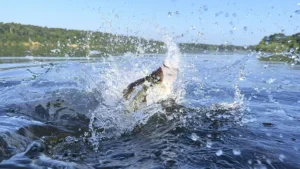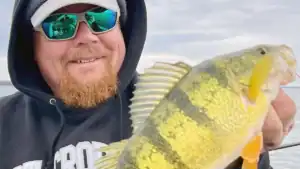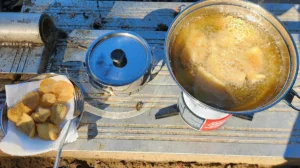The winter transition is in full effect down here in southeast Louisiana, and the crappie are on the move. As the calendar turns from November to December, I adjust my technique. Gone are the days of fishing the shallows, as the fish are now pushing into the deeper sections of the main rivers in 20 feet of water.
Not only are the sac-a-lait grouping tighter this month, but I’m also noticing bigger fish showing up in my regular spots. When that water starts to cool down, I’ll go from catching 9- to 10-inch fish to fish upward of 15 inches.
My go-to bait for winter fishing is a Bobby Garland Baby Shad in the Black Night color on a 1/32-ounce jighead. That combination has fooled plenty of cold-weather crappie for me, though there are plenty of other great crappie rigs that will work.
But that’s way down here in southeast Louisiana, and as I’ve learned many times before, what works here doesn’t necessarily work for crappie anglers throughout the country.To find out how other anglers approach the cold season, I reached out to several experienced crappie fishermen across the country and asked one question: What adjustments do you make during the winter season? We detail how to catch crappie in the cold months.
Central Missouri

When winter settles over central Missouri, Chris Emery says the crappie on Lake of the Ozarks can be found in a few different patterns depending on the weather and water clarity.
“On the Osage arm where the water stays dingy and the visibility is usually a foot or less, I target stake beds and brushpiles in 10 feet of water or deeper,” Emery tells Wired2fish. “Early in the morning or on cloudy days, the fish will suspend just above the cover, but when the sun gets up or after a front, they drop down into it.”
In clearer sections of the lake, Emery shifts his focus to brush in 15 feet or more, bluff drop-offs that hold large schools, or main-lake docks sitting over thirty feet of water. “If it’s sunny, I’ll fish the shaded areas under the docks,” he said. “If it’s cloudy, they’ll be suspended outside the floats.”
His go-to bait for these cold months is a Baby Shad from ATX Lure Company on a 1/8-ounce Apex Tackle jighead. “I like that screw lock on the shank because it keeps the bait in place,” Emery said. “If it’s cloudy, I’ll use black and chartreuse or black and pink. When the sun’s out, I like chartreuse and white, blue ice, or pink and pearl.”
Northern Minnesota
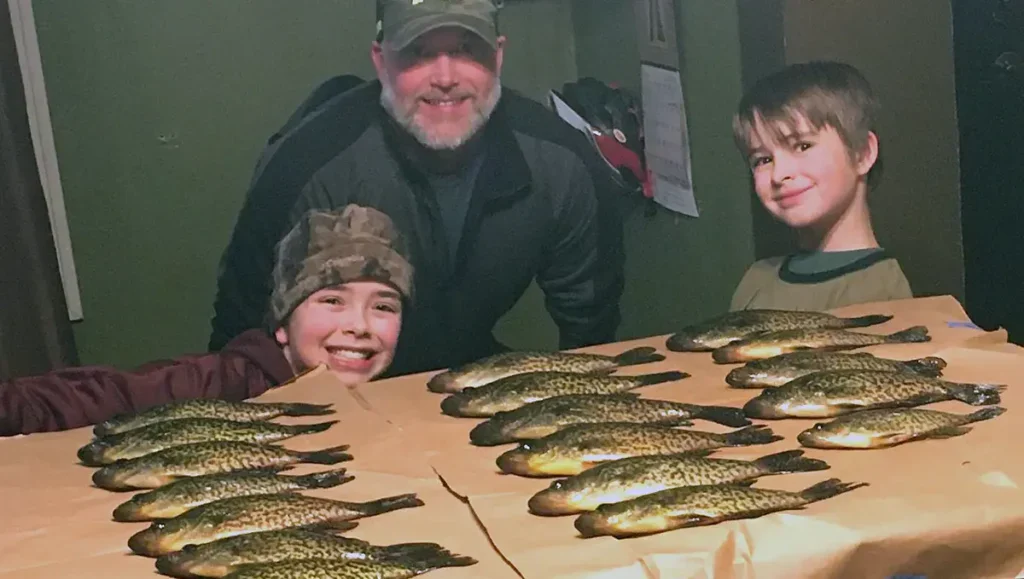
Farther north, Cory Goldsworthy fishes through some of the harshest winter conditions in the country, but that doesn’t slow down his crappie season. As ice begins to form on the small lakes and backwaters of northern Minnesota, his approach changes completely from the open-water months.
“In summer, I like to keep it simple,” Goldsworthy said. “A small white twister tail on a white jig head is my go-to. It’s an old-school setup, less than two inches long, but it works.”
Once the cold sets in, Goldsworthy switches gears. “My go-to winter setup is a Marmooska jighead with a crappie minnow hooked just below the dorsal fin,” he said. “That keeps the bait horizontal and lets it swim naturally.” He prefers the tungsten versions for added weight and says the glow tip on the jig helps fish locate it under the ice.
Goldsworthy starts his winter fishing around the same weedbeds he targets in early ice, then gradually moves to deeper holes as winter progresses. When spring approaches and the ice starts to soften, he follows the fish back shallow again.
Western Washington

Out west, Tom Ryle spends his winter months chasing crappie on the small lakes scattered across western Washington. When other seasons wind down, he says crappie fishing fills that cold-weather gap perfectly.
“I love crappie fishing, especially in the winter when I’m not caught up with other things,” Ryle said. “I’d call myself an average crappie angler, but I’ve found what works for me.”
Ryle’s approach is simple and consistent. “When the water’s clear, I fish darker colors and keep my baits smaller,” he said. “If the water’s murky, I’ll bump up the size a little and go with brighter colors. It’s the same idea I use when steelhead fishing.”
He fishes a handful of local lakes within a two-hour drive of home and prefers to rely on instinct rather than electronics. “I just move around and find fish the old-fashioned way,” Ryle said. His biggest crappie measured 15 inches, but he says most of his winter fish run between 11 and 13 inches, solid numbers for his part of the country.
Cold Weather, Hot Action
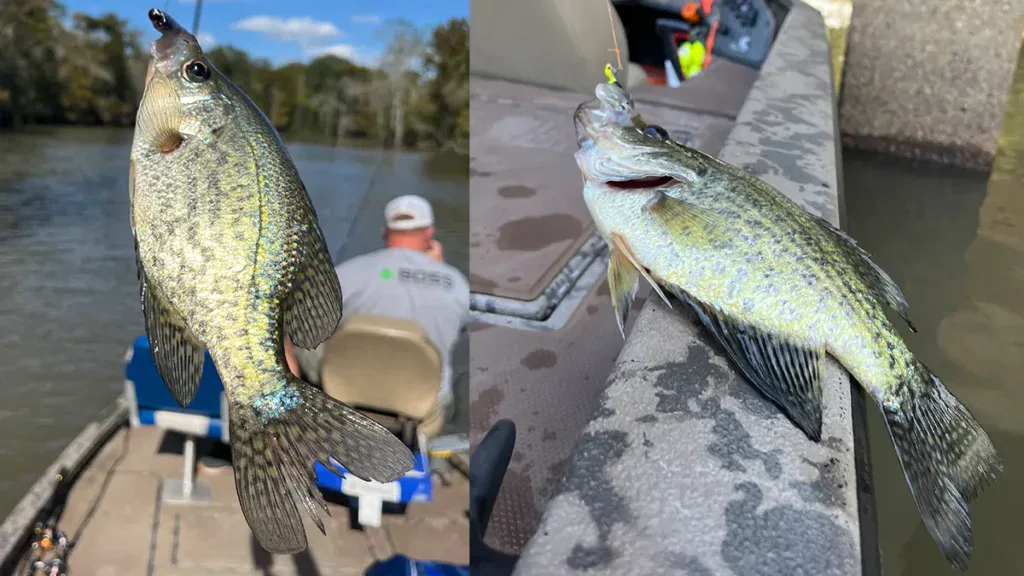
Winter might push some anglers off the water, but for crappie fishermen who adjust their approach, it opens a fresh window of opportunity. Across southeast Louisiana, central Missouri, and western Washington, the fish are grouped up and responsive to smart moves.
If you’re fishing now, pay attention to what the water’s doing, how deep the fish are, how clear the water is, and how the weather has moved in. Then match your tactic and presentation to that. A small shift in mindset this season could mean the difference between a ho-hum outing and one of your best winter limits yet.



